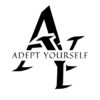1. What is socialism? How is it different from capitalism?
Answer:
Socialism is a political and economic system where the means of production and distribution are owned collectively by society or the state. It focuses on equality, public welfare, and reducing the gap between the rich and the poor.
In contrast, capitalism is based on private ownership and aims for profit, often leading to inequality.
2. Who were the main thinkers behind socialist ideas in Europe?
Answer:
The most influential socialist thinkers were Karl Marx and Friedrich Engels.
- They co-authored The Communist Manifesto (1848).
- Believed in class struggle and the need for a workers’ revolution to establish a classless society.
3. What were the main causes of the Russian Revolution?
Answer:
Key causes include:
- Autocratic rule of Tsar Nicholas II
- Economic inequality and land hunger among peasants
- Industrial unrest due to poor working conditions
- Defeat and hardships during World War I
- Lack of political freedom and repression of protests
4. What happened in the 1905 Revolution in Russia?
Answer:
In 1905, peaceful protestors were fired upon by the Tsar’s troops in an event known as Bloody Sunday.
This led to:
- Strikes and uprisings across the country
- Formation of the Duma (Parliament)
- Temporary promises of reform by the Tsar
5. What was the role of Lenin and the Bolsheviks in the Russian Revolution?
Answer:
Vladimir Lenin was the leader of the Bolshevik Party, a revolutionary socialist group.
- He opposed the Provisional Government and called for “Peace, Land, and Bread”
- In October 1917, the Bolsheviks overthrew the government and took control of Russia
- Lenin became the head of the world’s first communist government
6. What were the main events of the October Revolution?
Answer:
- Bolsheviks seized power on October 25, 1917 (Julian calendar)
- Took control of government buildings, banks, railways, and telegraphs
- The Provisional Government collapsed without much resistance
- A Soviet Government led by Lenin was formed
7. What changes did the Bolsheviks bring after the revolution?
Answer:
- Russia withdrew from World War I
- Land was redistributed to peasants
- Factories were nationalized
- Private property was abolished
- Banks and transport were brought under state control
- Education and health services were expanded
8. What was the Civil War in Russia? Who were the Red and White armies?
Answer:
After the revolution, a Civil War (1918–1921) broke out between:
- Red Army: Bolsheviks, led by Leon Trotsky
- White Army: Opponents of the revolution, supported by foreign powers
The Red Army won, securing Bolshevik control over Russia.
9. When was the USSR formed and what did it stand for?
Answer:
The USSR (Union of Soviet Socialist Republics) was formed in 1922.
It was a federation of socialist republics based on communist principles.
It focused on:
- Central planning of the economy
- Industrialization through Five-Year Plans
- Promoting education and healthcare
10. What was the global impact of the Russian Revolution?
Answer:
- Inspired socialist and communist movements worldwide
- Workers and peasants gained confidence to demand rights
- Capitalist countries feared revolution and became more repressive
- It led to the Cold War tensions between communist and capitalist nations
11. Define:
a) Soviets
Answer: Local councils of workers, peasants, and soldiers that played a major role in the revolution.
b) Duma
Answer: The Russian Parliament, created after the 1905 Revolution to appease protestors.
c) Provisional Government
Answer: A temporary government set up after the abdication of Tsar Nicholas II in February 1917.
12. What was the significance of the slogans “Peace, Land, and Bread” and “All Power to the Soviets”?
Answer:
These slogans reflected the real demands of the Russian people:
- Peace: End to war
- Land: Redistribution to peasants
- Bread: Food for the hungry
They helped the Bolsheviks gain support and justify the October Revolution.
